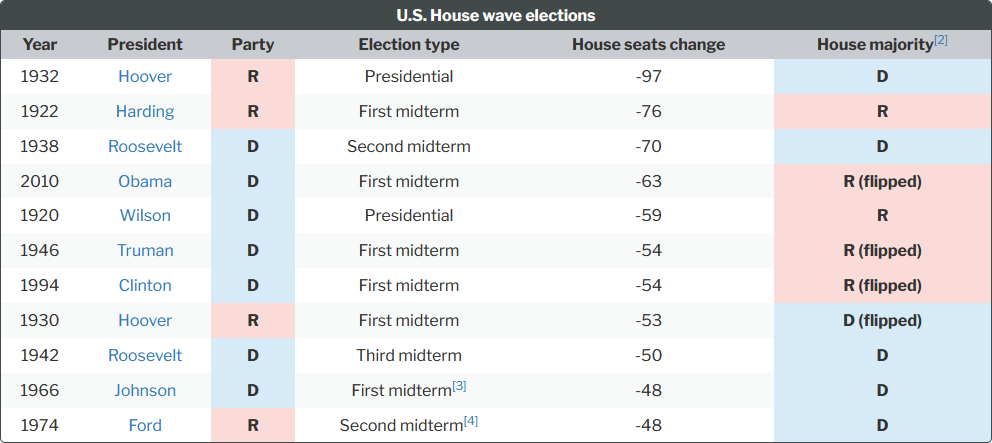The term wave election is frequently used to describe an election cycle in which one party makes significant electoral gains. With the 2022 Congressional elections approaching, the question of what qualifies as a wave election is once again gaining significance.
In a 2018 study, we examined the results of the 50 election cycles that occurred between 1918 and 2016—spanning from President Woodrow Wilson’s (D) second midterm in 1918 to Donald Trump’s (R) first presidential election in 2016. We defined wave elections as the 20 percent of elections in that period resulting in the greatest seat swings against the president’s party.
According to this definition, a U.S. House election cycle qualifies as a wave election if the president’s party loses at least 48 seats.
Between 1918 and 2016, 11 wave elections took place in the U.S. House. Six of these waves occurred during a president’s first midterm election. These six occurred under four Democratic presidents (Obama, Clinton, Johnson, and Truman) and two Republican presidents (Harding and Hoover). The president’s party lost an average of 58 seats in the U.S. House during these six elections.

As of Dec. 2, 2021, Democrats held 221 seats in the U.S. House. A wave election would result in them controlling no more than 173 seats in the chamber. Since the House grew to 435 seats in 1913, Democrats have held fewer than 173 seats twice: 131 during the 67th Congress (1921-1923) and 164 during the 71st Congress (1929-1931).
The 2018 U.S. House elections were the most recent first midterm election under President Donald Trump (R). Democrats won a majority in the chamber by gaining a net of 40 seats. The 2018 midterm election fell eight seats short of qualifying as a wave election.
Additional reading:


